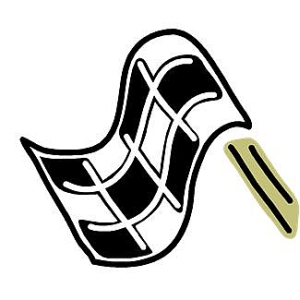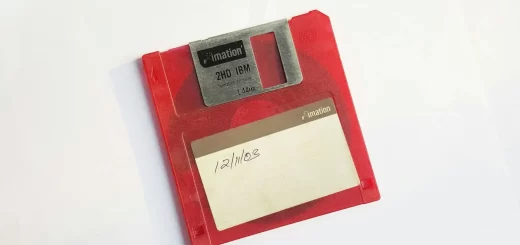Top 5 Communication Tips for Effective Project Managers

Managing a project without proper communication across one or more co-located or remote teams can be a nightmare. It is almost impossible to successfully complete any kind of project with inefficient communication considering the complex tasks, decision making, and details involved.
Project management requires effective communication among all parties involved to ensure everyone is on the same page and working toward achieving a common goal. It also helps identify potential challenges before they become a problem and allows for timely implementation of effective solutions.
Every project manager needs to cultivate their communication skills to guarantee the successful completion of their projects.
In this piece, we’ll look into five tips to enhance communication for project managers and team leaders.
Be Accessible to the Team
The project manager sets the tempo for the rest of the team. The key to successful communication is being available and accessible. You should aim to be available and have a good understanding of the roles of every member of the team and challenges involved.
While remote communication can work in some cases, it is not reliable enough to be the only form. Indirect forms of communication create an atmosphere or passive communication between the team and clients which can lead to laxity.
Establish Clear and Consistent Communication Channels. One of the challenges of project management communication is coordinating multiple teams and stakeholders, each with their own preferences and expectations for communication. To avoid confusion and misunderstanding, it is important to establish clear and consistent communication channels for different purposes and audiences.
For example, you can use email for formal and official communication, such as project updates, reports, or contracts.
- Use instant messaging or phone calls for informal and urgent communication, such as feedback, questions, or issues.
- Also consider online platforms and tools, such as Slack, Monday.com or Trello, for collaborative and interactive communication, such as brainstorming, sharing ideas, or assigning tasks.
- Besides, share the frequency and format of your communication, such as daily, weekly, or monthly meetings, calls, or newsletters.
Use Visual Aids and Tools to Enhance Your Communication. Sometimes, words are not enough to convey complex or abstract information, such as project goals, plans, progress, or results. In these cases, you can use visual aids and tools to enhance your communication and make it more clear and engaging.
For example, you can use charts, graphs, diagrams, or infographics to illustrate data, trends, or relationships.
- Use timelines, calendars, or Gantt charts to show project phases, milestones, or deadlines.
- Create maps, sketches, or mockups to show project locations, designs, or prototypes.
- Also use video conferencing or screen sharing to demonstrate project features, functionalities, or outcomes.
- Visual aids and tools can help you communicate more effectively and efficiently with your team and stakeholders.
Have a Plan for Project Meetings
You will have to meet the team involved in the project and other stakeholders multiple times throughout the duration of the project. They play a key role in successful project management but they can also do harm when not implemented effectively. While they can help improve communication, they also take away valuable time that would be spent working on the actual project.
Before holding any meeting, create an agenda so you can take advantage of the benefits without wasting valuable time. Note down what you intend to discuss in the meeting, the parties involved, and the duration of the meeting.
Follow these basic ideas to organize effective meetings:
- Share the agenda with the participants before the meeting, so they can prepare and contribute effectively. Also, assign roles and responsibilities to the participants, such as facilitator, note-taker, timekeeper, etc., to ensure the meeting runs smoothly and productively.
- During the meeting, stick to the agenda and avoid any distractions or deviations. Encourage active participation and feedback from all attendees, and make sure everyone is on the same page. Use visual aids and tools, such as slides, charts, or polls, to enhance your communication and engagement.
- After the meeting, follow up with the participants and share a summary of the key points, decisions, and actions from the meeting. Also, solicit feedback and suggestions on how to improve future meetings. Track and monitor the progress and outcomes of the actions assigned during the meeting.
Improve Communication Skills
Communication involves more than talking and listening. As project manager, you need to be able to link different parties and ensure they are all on the same page. You can improve your communication skills by finding a communications degree worth studying. A communications degree can help you get better at strategizing, connecting, critical thinking, solving problems, and delivering complex ideas. You can also take advantage of project management tools that allow you to delegate tasks and monitor progress.
Keep in mind these tips to improve your collaboration skills:
- Communication involves more than talking and listening. As a project manager, you need to be able to link different parties and ensure they are all on the same page. You can improve your communication skills by finding a communications degree worth studying. A communications degree can help you get better at strategizing, connecting, critical thinking, solving problems, and delivering complex ideas. You can also take advantage of project management tools that allow you to delegate tasks and monitor progress.
- Practice active listening and feedback. Active listening means paying attention to what the other person is saying, asking clarifying questions, and summarizing or paraphrasing their main points. Feedback means giving constructive and specific comments or suggestions on how to improve or enhance the communication or the project. Active listening and feedback can help you build rapport and trust with your team and stakeholders, as well as identify and resolve any issues or misunderstandings.
- Adapt your communication style and tone to suit different situations and audiences. Different people may have different preferences, expectations, and needs for communication, depending on their personality, culture, background, or role. For example, some people may prefer formal or informal communication, some may prefer written or verbal communication, some may prefer direct or indirect communication, etc. You should be able to adjust your communication style and tone to match the context and purpose of your communication, as well as the characteristics and preferences of your audience.
Establish an Effective Review and Approval Process
As APQC mentioned in their research paper, the review and approval process is among priority areas presenting a huge challenge for project managers is the review and approval process. You can find project management apps that help streamline this area. They can allow the different stakeholders to provide updates and feedback and sign off on approval in real-time. This is key to ensuring that you complete the project within the stipulated time-frame and budget.
An effective review and approval process is essential for ensuring the quality and consistency of your project deliverables, as well as avoiding delays and rework. You should have a clear and agreed-upon process for how, when, and by whom your project outputs will be reviewed and approved, as well as how feedback and changes will be communicated and implemented. You can use some of the following tips to improve your review and approval process:
- Define the roles and responsibilities of the reviewers and approvers. You should identify who are the key stakeholders that need to review and approve your project deliverables, such as clients, sponsors, managers, team members, etc. You should also clarify what are their expectations, criteria, and authority for reviewing and approving your project outputs, as well as how they will provide feedback and suggestions.
- Establish a realistic and transparent timeline for the review and approval process. You should plan ahead and allocate enough time for each stage of the review and approval process, taking into account the complexity and urgency of your project deliverables, as well as the availability and responsiveness of your reviewers and approvers. You should also communicate the timeline to all parties involved and update them on any changes or delays that may occur.
- Use online tools and platforms to facilitate the review and approval process. You can use online tools and platforms, such as Google Docs, Dropbox, or Asana, to share your project deliverables with your reviewers and approvers in real-time. These tools can also help you track the status and progress of the review and approval process, as well as collect and manage feedback and revisions. You can also use features such as comments, annotations, or approvals to streamline the communication and collaboration among your reviewers and approvers.
Make a Clear Communication Plan
Before you embark on the project, you should brief all involved parties on how you expect them to communicate and the channels they should use. Before creating a communication plan, you should have a good understanding of the kind of communication needed and who you need to communicate with. Share the plan with everyone involved and set expectations right from the start.
A clear communication plan is a document that outlines the objectives, strategies, methods, and tools for communicating with your project team and stakeholders. It helps you ensure that everyone involved in the project has the right information at the right time and in the right way. A clear communication plan can also help you prevent or resolve conflicts, manage expectations, and build trust and rapport.
To create a clear communication plan, try these steps:
- Identify your communication goals and audience. You should define what you want to achieve with your communication, such as informing, persuading, motivating, or collaborating. You should also identify who you need to communicate with, such as team members, clients, sponsors, managers, etc. You should consider their roles, interests, needs, and preferences for communication.
- Choose your communication methods and channels. You should select the most appropriate and effective ways to communicate with your audience, depending on the purpose, context, and urgency of your communication. You should also choose the best platforms or tools to deliver your communication, such as email, phone, video conferencing, online collaboration tools, etc. You should also consider the advantages and disadvantages of each method and channel, such as cost, speed, reliability, accessibility, etc.
- Define your communication frequency and format. You should specify how often and when you will communicate with your audience, such as daily, weekly, monthly, or as needed. You should also define the format and structure of your communication, such as reports, newsletters, presentations, etc. You should also include the expected response time and feedback mechanism for your communication.
- Monitor and evaluate your communication effectiveness. You should track and measure the results and outcomes of your communication, such as feedback, satisfaction, engagement, performance, etc. You should also solicit feedback and suggestions from your audience on how to improve your communication. You should also review and update your communication plan regularly to adapt to any changes or challenges in your project.
Endnote
Communication is a vital skill for any project manager who wants to lead their team and stakeholders to success. By following these five tips, you can enhance your communication and improve your project management performance. You can also learn more about communication and project management by exploring some of the online resources and tools that I have mentioned in this article. I hope you found this article helpful and informative.











